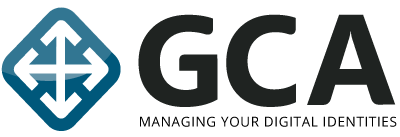Today’s digital landscape is built on identity—every application, system, and interaction is tied to it. For organizations to operate efficiently, they rely heavily on a broad ecosystem of applications. According to Okta, enterprises now manage an average of 211 apps to support their business functions.
With that scale comes a significant identity management burden: hundreds of accounts, usernames, and passwords. This complexity not only strains productivity but also expands the attack surface. Identity is a critical control point for security—verifying who is accessing what, and when, is non-negotiable.
The solution is Single Sign-On (SSO). By centralizing authentication, SSO simplifies access for users while giving security teams better visibility and control. It enables organizations to protect the business without slowing it down.
What is SSO?
Even if you're not familiar with the term, you’re probably already using single sign-on (SSO) software more often than you think. Anytime you log in to a platform using your Google, Microsoft or Facebook account—whether it’s YouTube, a news site, or a collaboration tool—that’s SSO in action. It’s designed to simplify access by allowing one set of credentials to unlock multiple services.
The goal of SSO, a key component to Web Access Management (WAM) platforms, is to streamline access to various accounts under one authentication solution. If your business uses more than 200 apps, SSO isn't just convenient; it's essential. It reduces the number of credentials users need to remember, minimizes login fatigue, and improves productivity by streamlining access to busines-critical tools, making the process more user-friendly and less time-consuming.
More importantly, SSO plays a foundational role in identity and access management (IAM). It helps ensure the right individuals have access to the right resources, at the right time—while giving security teams the visibility and control needed to protect the organization.
As app usage continues to grow across every industry, SSO enables secure, seamless access—helping businesses stay agile, collaborative, and resilient in an increasingly digital world.
Benefits of SSO
Single sign-on (SSO) is a strategic asset for any organization. It delivers secure, streamlined access while reducing friction for users—driving both productivity and stronger security outcomes.
User-Friendly Logins
Managing dozens—or even hundreds—of passwords can quickly lead to password fatigue: the frustration and risk that comes from juggling too many login credentials. It’s a common challenge in today’s digital workplace, and one that often leads users to adopt poor password habits, like reusing weak passwords or storing them insecurely.
SSO addresses this challenge head-on by eliminating the need to remember multiple passwords. With one secure set of credentials, users can access all the tools and platforms they need to do their jobs—safely and efficiently.
By simplifying the login experience, SSO reduces user friction, supports stronger password hygiene, and allows employees to focus on work instead of wasting time recovering or resetting forgotten credentials. It’s a simple solution with a big impact on both user experience and organizational security.
Increased Productivity
Manually entering passwords multiple times a day may seem like a small inconvenience, but across an entire organization, those minutes quickly add up—reducing efficiency and increasing user frustration. For instances where users forget passwords, the recovery process—often involving multiple verification steps and third-party platforms—can be time-consuming and disruptive.
Single sign-on streamlines this process by allowing users to securely access all necessary applications with a single set of credentials, while centralizing password management; when a password reset is required, updating one password updates access across all integrated systems, improving both security and user experience. By reducing logon friction, SSO helps employees stay focused and agile, move between systems seamlessly and maintain momentum throughout the day. Shorter logon durations translate directly to higher productivity, allowing teams to spend less time managing access and more time driving results.
Improved Security
Businesses often have to comply with strict regulations to maintain a high level of security. IT departments can set web access management authentication and authorization policies to align with such regulations so all entry points to apps and websites are secure, while providing SSO to ease end-user frustration. Setting a requirement for password complexity standards will guarantee that all users are taking necessary precautions to keep information safe from outside users.
Additionally, with simplified password management, employees won’t need to store passwords in unsecure locations. Most data breaches are caused by weak passwords, and this problem can easily be resolved thanks to SSO requirements. With centrally-controlled authentication, businesses are also able to revoke SSO access as soon as an employee leaves the company, thereby instantly removing the ability to login to any application integrated with SSO.
Lower IT Costs
Forgotten passwords require time to recover or replace. Frequent tickets will put a lot of pressure on your IT department if password problems persist. In fact, it costs an average of $70 to reset a single password. Depending on the size of the organization, this could cost thousands of dollars each year.
Not only is logging into accounts extremely frustrating without proper organization, IT departments take on a lot of the burden. Single sign-on technology reduces the need for IT to resolve problems so employees can get to work without leading to significant losses.
Get SSO Implementation Support
Productivity, security, and user experience are just a few of the benefits of SSO. In order to keep employees happy and maintain production levels, businesses need to implement the right tools to get the job done. A single credential that can be used across platforms will provide an environment where information stays secure while switching between different tasks.
GCA provides businesses with the right tools to get started with IAM systems. If SSO technology seems like a good fit, our experts are ready to help with design and implementation of streamlined accessibility within your organization.
For a seamless user experience across multiple channels, get in touch with one of our IAM experts today!



